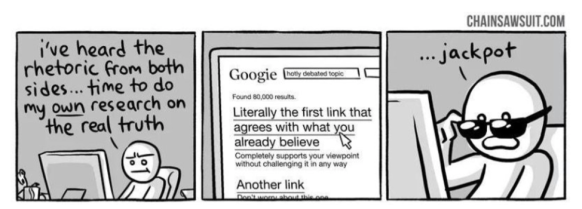
Hindsight bias occurs when people feel that they “knew it all along,” that is, when they believe that an event is more predictable after it becomes known than it was before it became known.
It is closely related to outcome bias, whereby we evaluate a decision by the outcome it generates.
In 2009, with his team leading 34-28 late but backed up at their own 28-yard-line with two minutes left and needing two yards for a first down, New England Patriots’ coach Bill Belichick chose to go for it on fourth down to try and keep the ball out of opposing quarterback Peyton Manning’s hands. Although it was, statistically, the correct call, it didn’t work out.
Because it didn’t work out, Belichick received withering criticism. For example, Dan Shaughnessy of The Boston Globe called the decision “ghastly” and a “gaffe unrivaled.” NBC analyst Rodney Harrison, who had played for Belichick, called it “the worst coaching decision I’ve ever seen Bill Belichick make.” Jay Mariotti said the call was “inexplicably arrogant” and “football suicide.” On SportsCenter, Trent Dilfer called the decision “ludicrous” and “absolutely ridiculous.” Jim Litke of the AP referred to it as “a reckless gamble.”
On the other hand, had the decision turned up roses, it would surely have been hailed as brilliant and courageous. That’s outcome bias.
In one representative study, 77 percent of entrepreneurs in charge of failed start-ups believed – before the failure – that their company would grow into a successful business. After they failed, only 58 percent said they had originally believed their company would be a success.
Salena Zito made her name with sympathetic (perhaps too sympathetic) profiles of Trump voters that gained the president’s approval. In September of 2016, she famously observed that, when Trump says something obviously false, “the press takes him literally, but not seriously; his supporters take him seriously, but not literally.”
Zito also had a carefully constructed narrative to set herself apart: “When I cover politics, I don’t fly. I only take back roads. I stay in a bed and breakfast. That’s why I had a different take.”
After the election, Politico called Zito “a reporter who saw Trump’s victory coming from miles away.” Zito didn’t disagree. “Everybody, everybody thought I had lost my mind,” she said (emphasis in original). As she carefully explained: “I essentially said, ‘This race is over, nobody knows it yet.’”
She “knew it all along.” Except she didn’t.
Despite Zito’s subsequent claims (and higher profile jobs and book deal), she didn’t really predict a Trump victory beforehand. The alleged prediction was a July, 2016 column that said the election “might be different” and that Trump “can win” Pennsylvania and thus the election. She had been similarly optimistic about the McCain and Romney candidacies. Indeed, Zito devoted one of her last columns before the 2016 election to explaining why “[a] Trump defeat will be incredibly difficult for his supporters to accept.”
It was only afterward that she said she saw it coming “from right before the convention.”
She “got the feeling that this would go for Trump.”
A few people did get it right. They knew it all along.
Even when they didn’t.

 It’s a weekend tradition of sorts. On Friday evenings when I’m home, I outline what chores I plan to get done around the house on Saturday and what I need to buy to complete them. Inevitably, however, it takes a lot longer to do my chores than I expect and I routinely need to make multiple visits to Home Depot for supplies because I’m missing something (or multiple somethings). And the results aren’t often great.
It’s a weekend tradition of sorts. On Friday evenings when I’m home, I outline what chores I plan to get done around the house on Saturday and what I need to buy to complete them. Inevitably, however, it takes a lot longer to do my chores than I expect and I routinely need to make multiple visits to Home Depot for supplies because I’m missing something (or multiple somethings). And the results aren’t often great.






 Fear and horror are what anthropologists call
Fear and horror are what anthropologists call 





